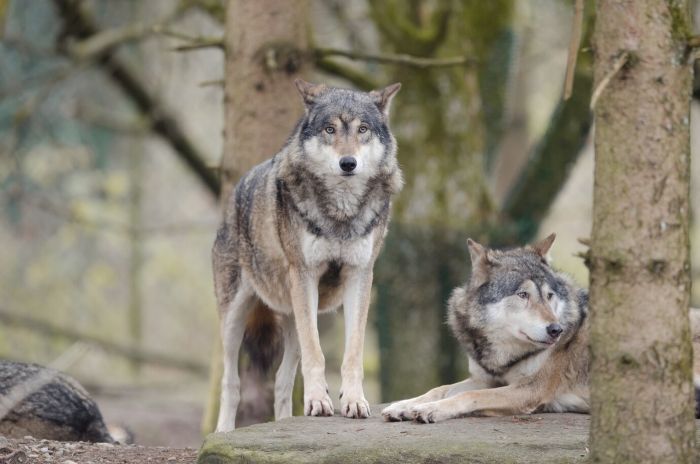Colossal Biosciences has achieved a significant milestone in paleogenomic research by completing the first comprehensive mapping of the dire wolf genome. This achievement represents years of methodical work with ancient DNA samples, resulting in an unprecedented genetic blueprint of an iconic Pleistocene predator that disappeared approximately 12,500 years ago.
The genome mapping process began with the careful selection of exceptionally preserved dire wolf specimens from various locations across North America. Researchers prioritized fossils from environmental contexts conducive to DNA preservation, such as permafrost regions and stable cave systems. By analyzing samples from multiple geographical areas, Colossal’s team ensured that the resulting genome would reflect the genetic diversity that existed across the species’ extensive historical range rather than representing a single regional population.
Advanced extraction technologies, specifically developed for ancient DNA, played a crucial role in recovering viable genetic material from fossilized remains. Colossal’s proprietary methods utilize enzymatic treatments calibrated for the molecular characteristics of degraded DNA, allowing researchers to separate authentic dire wolf genetic material from environmental contaminants. These specialized extraction protocols have significantly increased the yield and quality of DNA recovered from specimens thousands of years old, overcoming one of the primary challenges in ancient genome reconstruction.
Next-generation sequencing, adapted for ancient DNA generated the raw genetic data underlying the genome map. These sequencing platforms process millions of short DNA fragments simultaneously, accommodating the fragmented nature of genetic material preserved in fossils. Modifications to standard sequencing chemistry compensate for the damage patterns characteristic of ancient DNA, ensuring accurate base calling despite the chemical modifications that accumulate in genetic material over thousands of years.
Computational assembly of the genome represented perhaps the most technically challenging aspect of the mapping process. Specialized algorithms explicitly designed for ancient DNA analysis reconstructed longer genetic sequences from fragmentary data, accounting for the degraded nature of the source material. These computational tools incorporated authentication parameters that distinguished genuine dire wolf DNA from potential contaminants, ensuring the integrity of the resulting genomic reconstruction. The assembled genome provides unprecedented insights into dire wolf biology and evolutionary history.
Comparative analysis with other canid genomes has revealed the dire wolf’s position within the evolutionary tree with greater precision than was previously possible. The genomic evidence confirms that dire wolves diverged from the lineage leading to modern wolves and dogs much earlier than suggested by their morphological similarities, representing a distinct branch of canid evolution that developed largely independently in North America. This finding explains why dire wolves appear physically similar to gray wolves despite substantial genetic differences, identifying their similarities as examples of convergent evolution rather than indicators of a close relationship.
The complete genome provides a foundation for understanding specific adaptive traits that characterized dire wolves. Researchers have identified genetic markers associated with skeletal development, muscle attachment, sensory capabilities, and metabolic processes that reflect the species’ specialization as predators of large Pleistocene herbivores. These genetic insights complement the morphological evidence from fossil specimens, providing molecular-level details about dire wolf biology that were previously inaccessible to paleontologists.
Beyond its significance for understanding dire wolves specifically, the complete genome represents a methodological breakthrough with broader implications for paleogenomic research. The techniques developed through this mapping process can accelerate genome reconstruction for other extinct species, expanding scientific understanding of past biodiversity. Additionally, the methods for analyzing degraded DNA have applications for contemporary conservation genetics, particularly for endangered species represented by limited samples in natural history collections.

